Visitors pass beneath the first gate, on a decorative stone path surrounded by formal gardens. Then the path turns a corner to become rustic; a steep, dirt, switchback trail that winds up to the top of the heavily wooded hill.
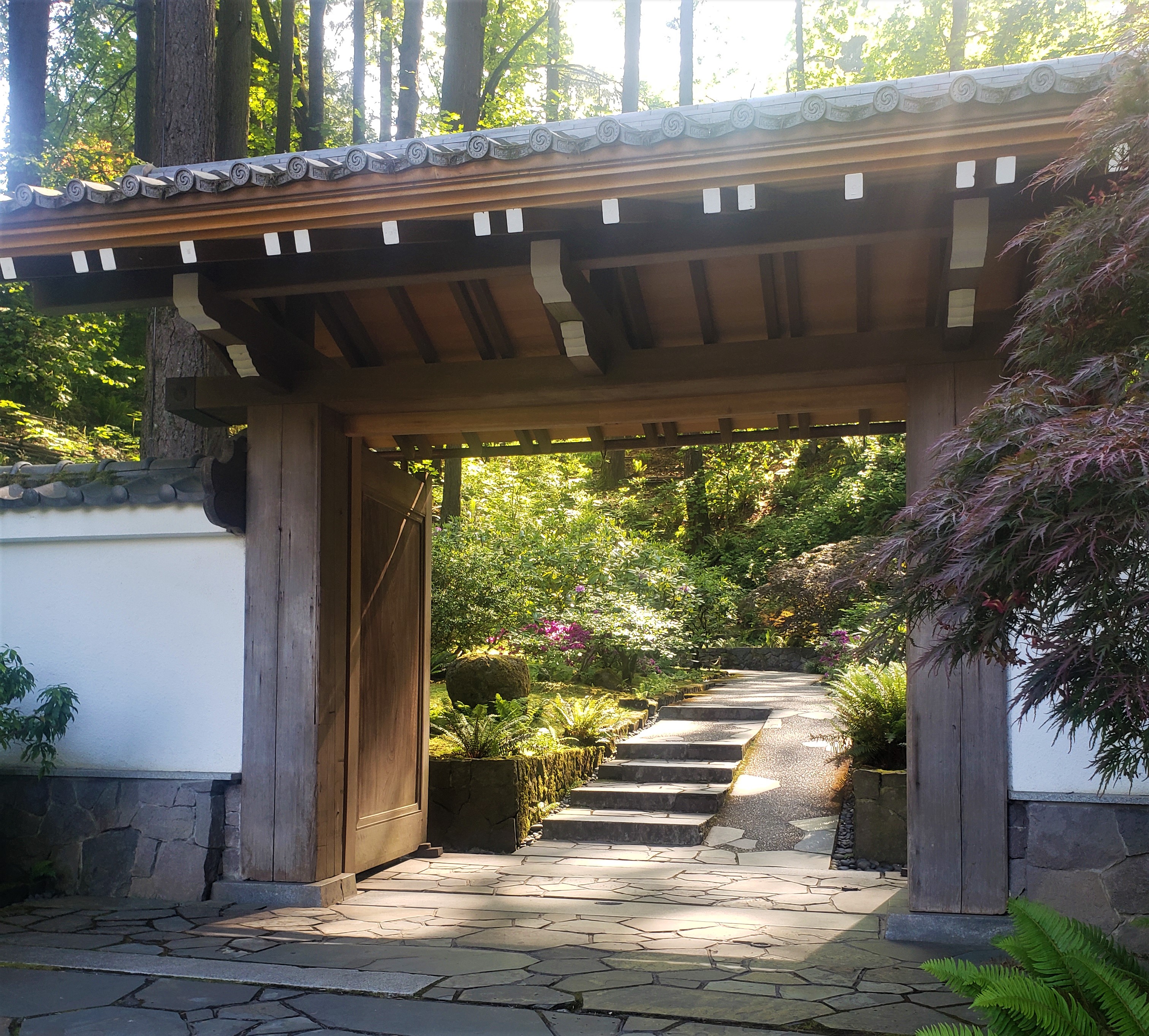
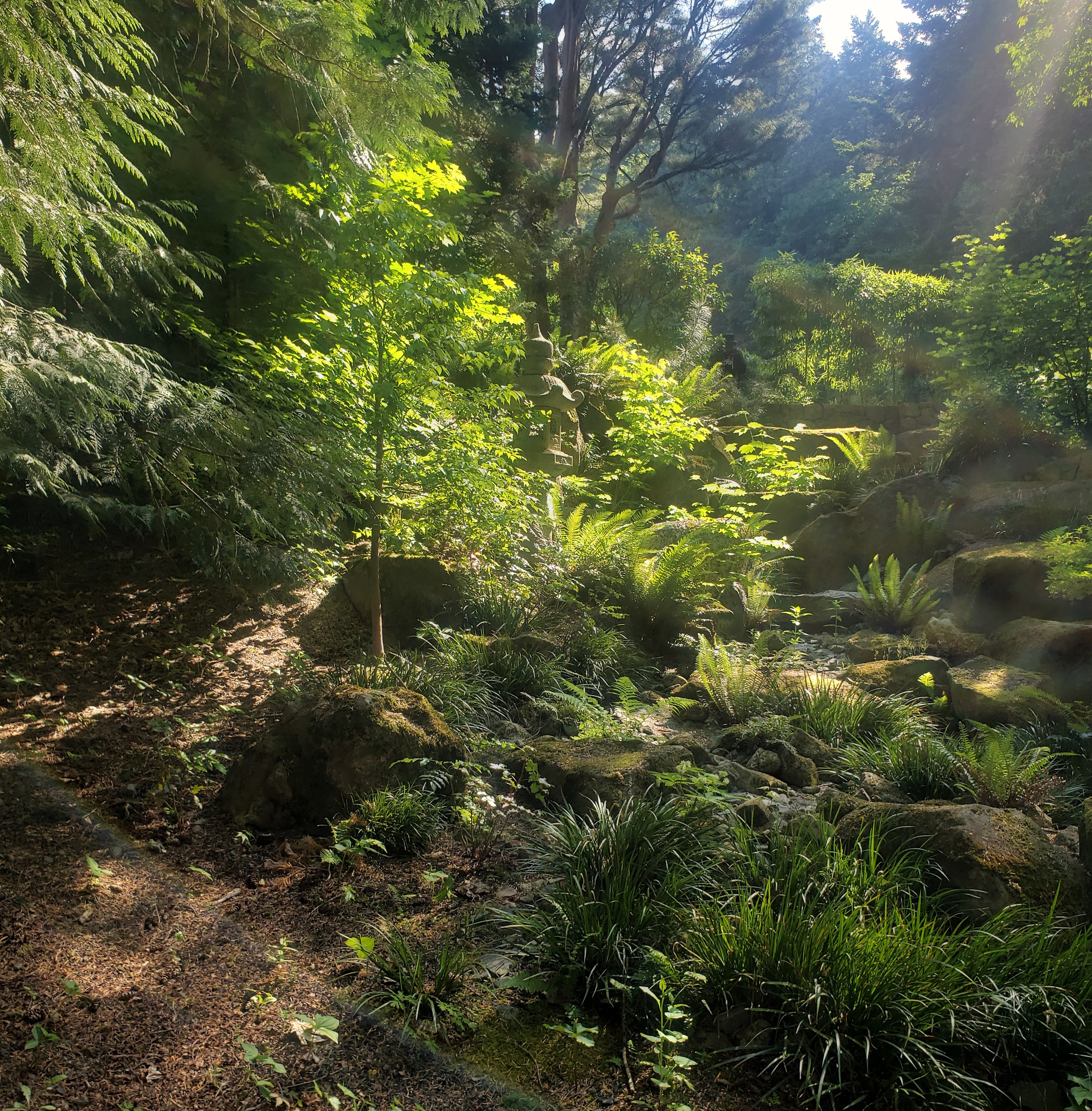
You spy rooftops above and feel a frisson of excitement as you climb. The first glimpse of the buildings is from a bridge leading to a final set of steps. The clear sides allow an unobstructed view of the mountainside as you pass.
The Portland Japanese Garden has incorporated several different garden styles for visitors to enjoy: a dry zen garden, a flat garden, a promimade garden, and a tea garden. In general, Japanese gardens are intended to portray the essence of nature in a historical and spiritual context.
The editors at Britannica.com give a nice description:
“Throughout history the Japanese have tried to emphasize in their gardens the charm of restraint; beauty is so concealed that it may be discovered individually, thus providing a thrill of joy to the soul like that which comes from doing a good deed in stealth. In its ideal at least, the Japanese garden, which always has been part of the home, is by no means merely an arrangement of beautiful places. It aims at satisfying a human craving for the natural and, by supplying peace and repose, at offering a retreat in which one can find spiritual recreation and sustenance.”
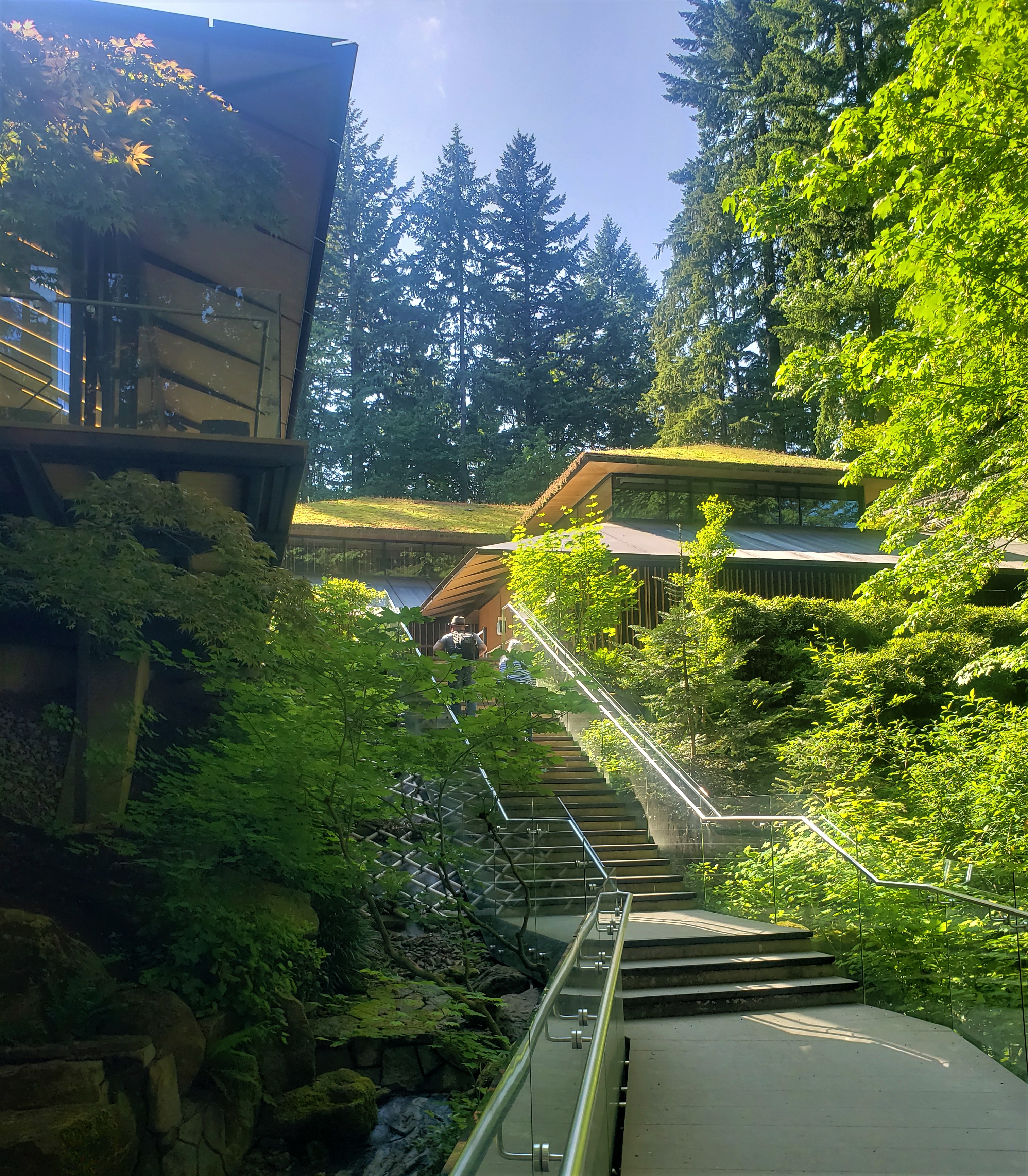
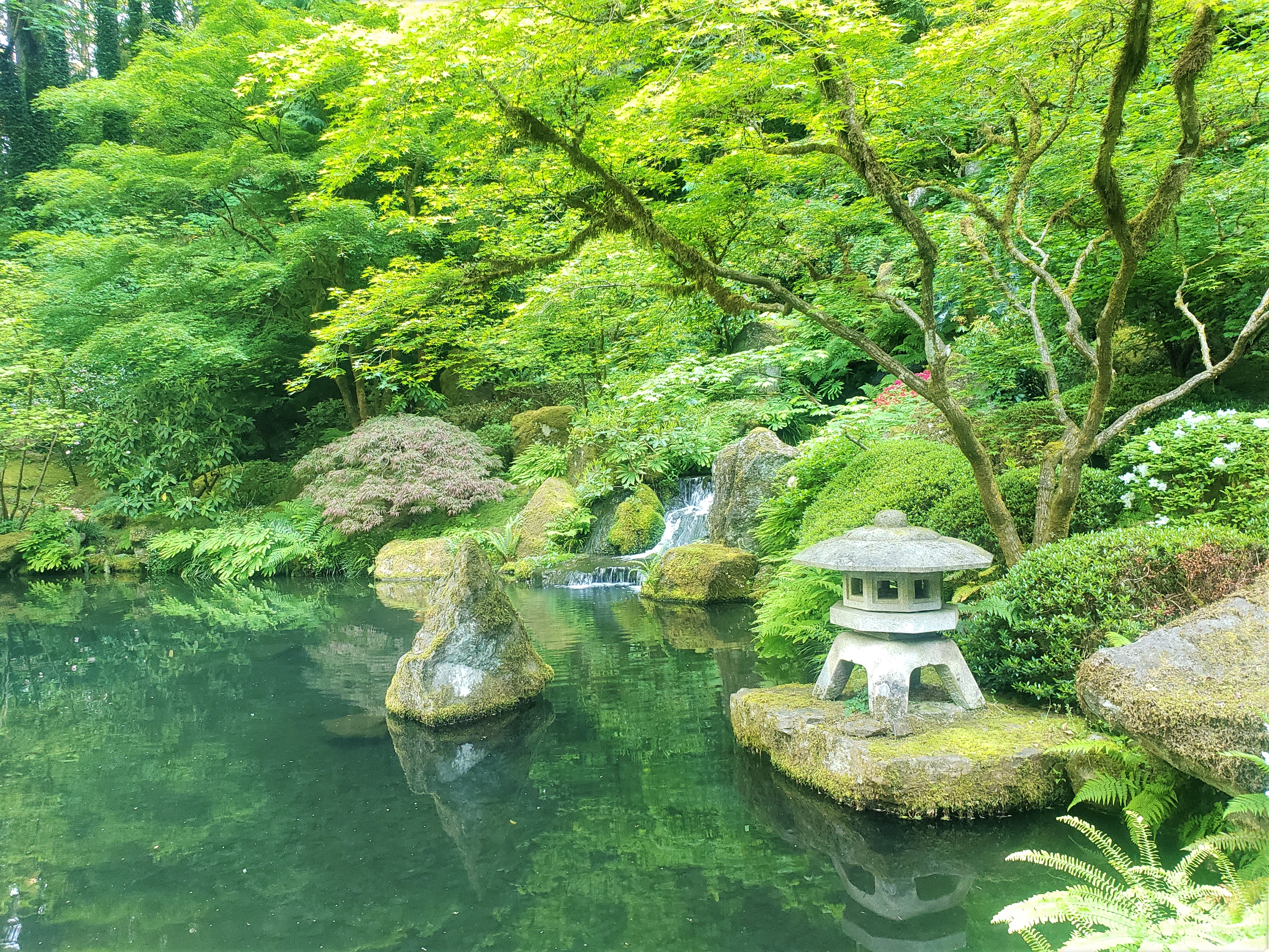
Garden elements
Some common elements that are found in most Japanese gardens are rocks and water. These two elements are considered yin and yang; the rock is hard and the water is soft, but the water can erode the rock over time. You will see ponds and small waterfalls throughout the garden, dotted with rocks and stones.
Most components in the garden will be miniaturized and always placed with precision. For example, water features should flow east to west, north to south for luck. Rocks and stepping stones should be well set to show stability or permanence. Often moss is used to emphasize the ancient nature of the garden, although; in Portland moss will even grow on a rolling stone so they probably didn’t have to work too hard on that!
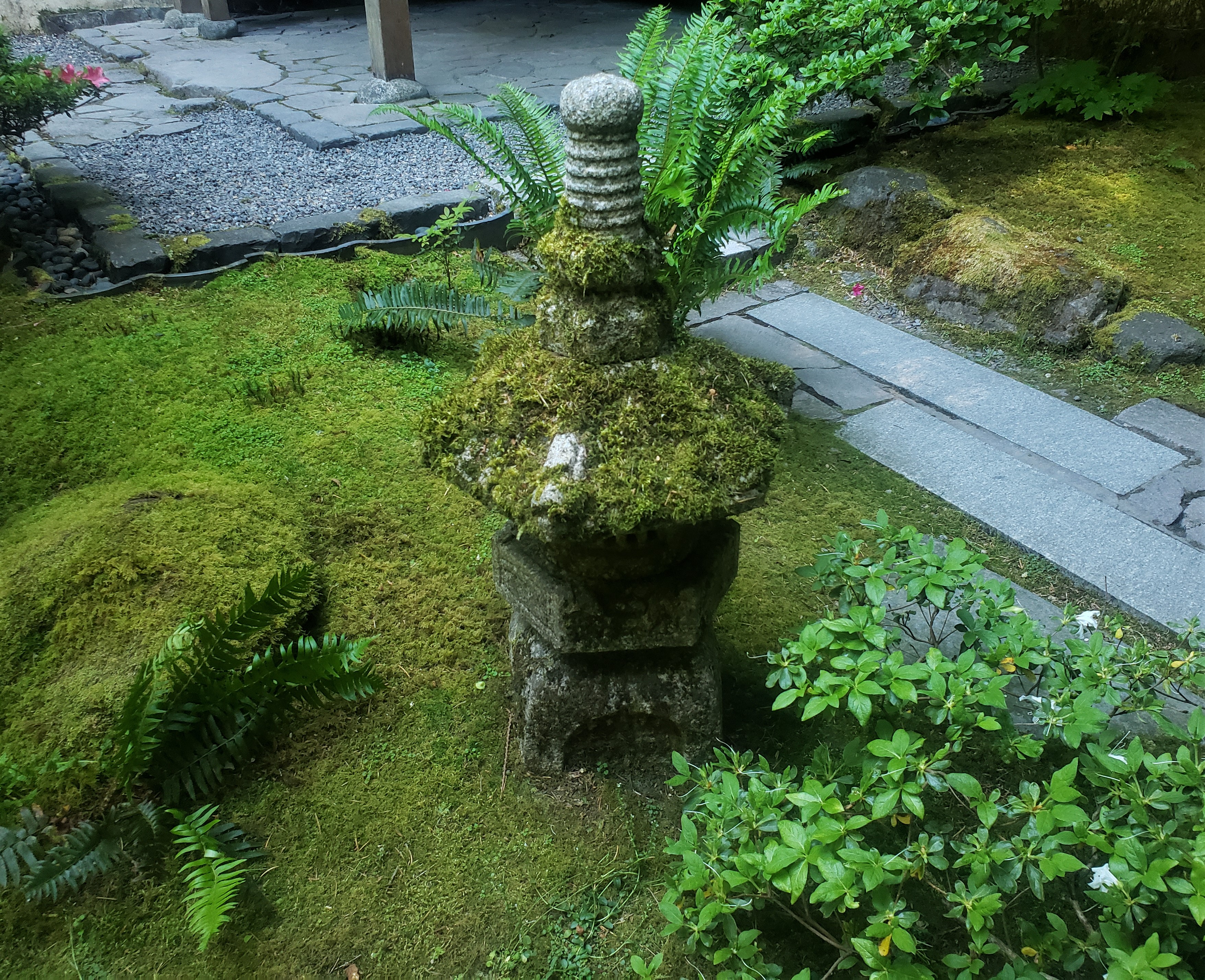
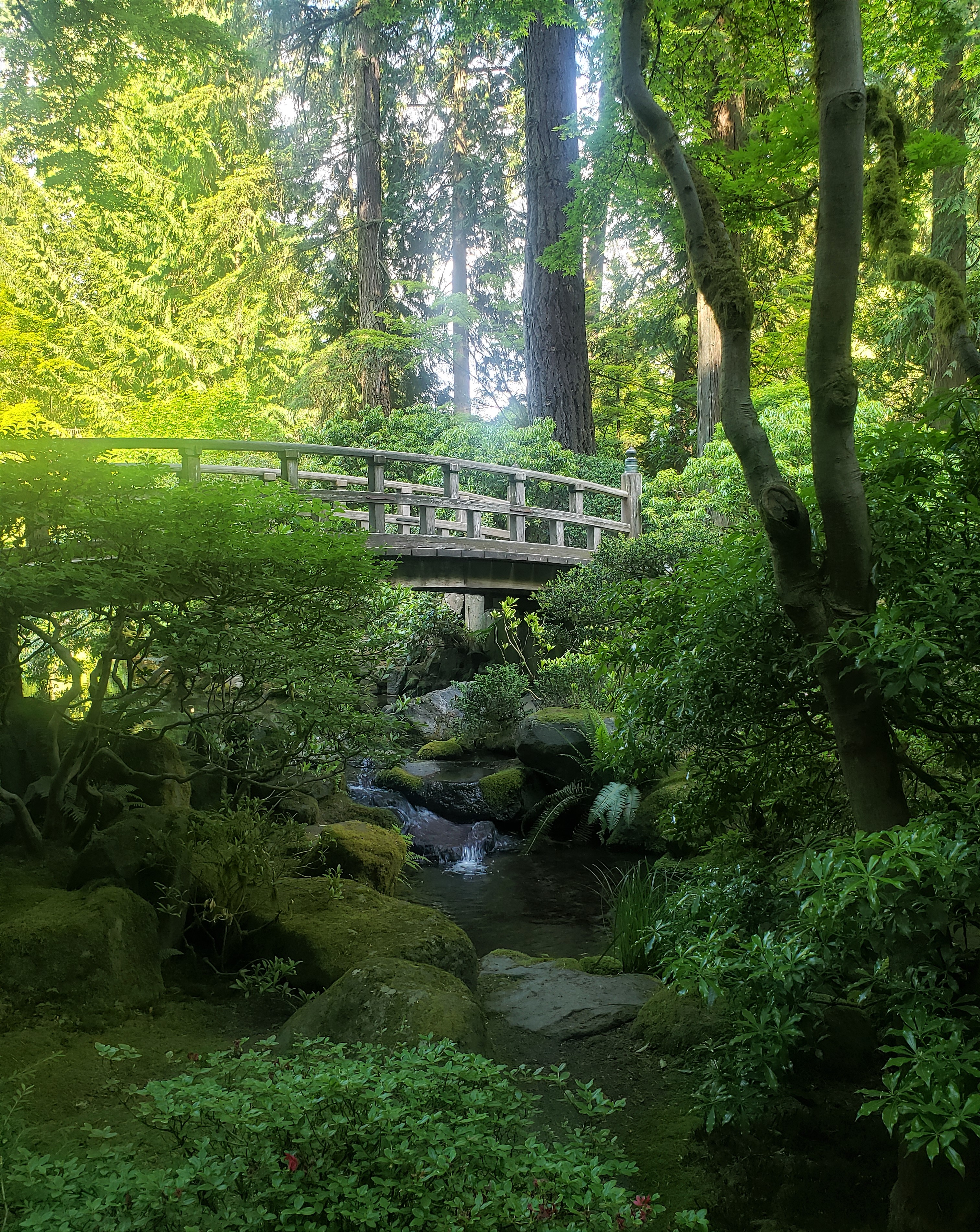
Placement
There is also meaning in the placement. Three rocks of different sizes, for example, will represent the heavens, man, and earth. Man will be in the middle, as he is in life. A bridge might symbolize the path from earth to heaven when crossing a body of water to reach a small island.
Two more common features are stone lanterns and water basins. Not only are they asthetically pleasing, but they also have cultural and spiritual significance. The bottom of a stone lantern represents earth and, over that, water. There is fire in the lantern with air above and finally spirit, representing that man will return to his element after death.
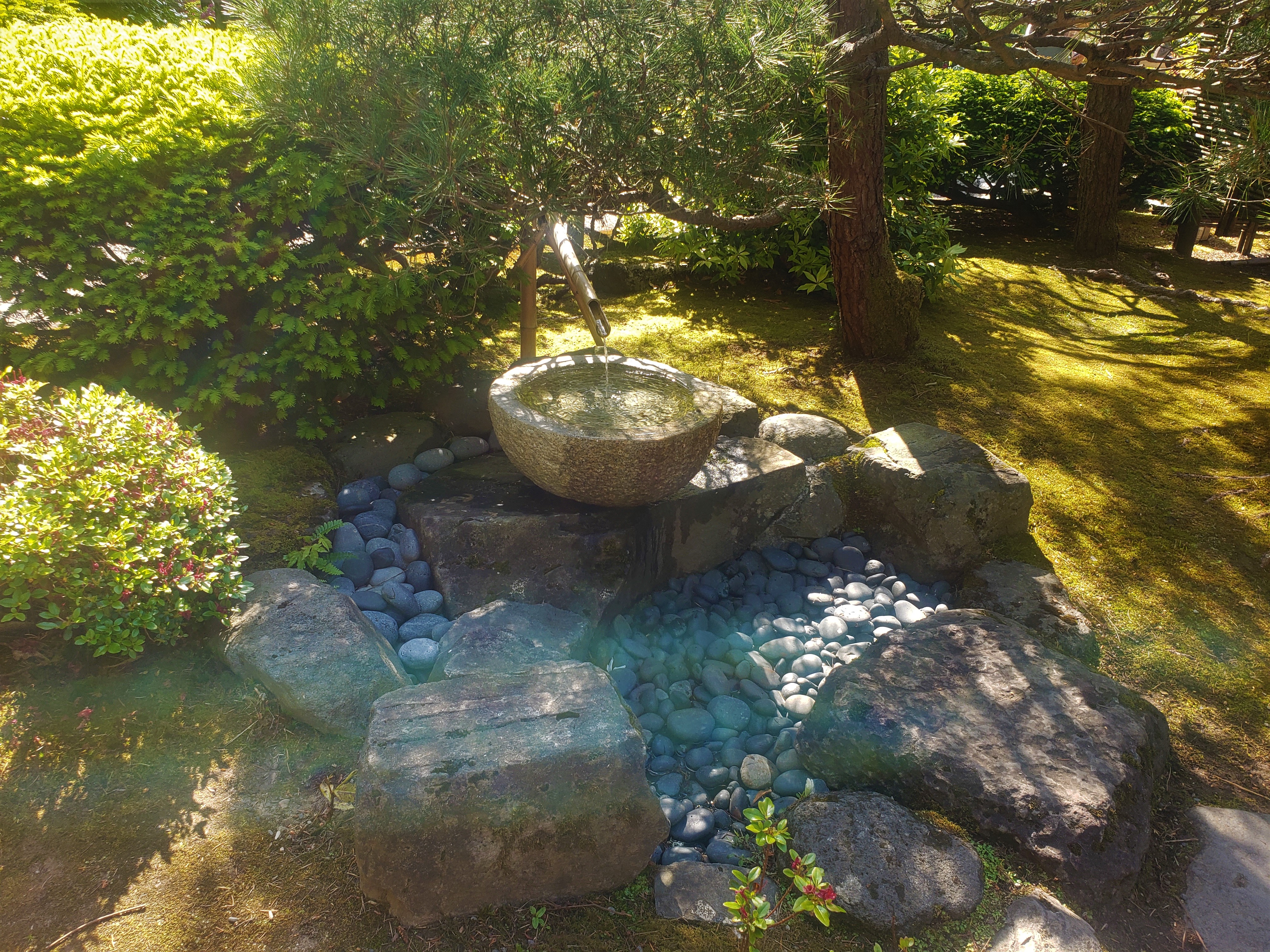
Basins
The water basins, often with a thin stream of water flowing along a bamboo trough, were originally for ceremonial cleansing but are often used as decoration. They are set low to the ground so you have to stoop or bend to cleanse your hands, thus providing an opportunity to see the garden from another angle.
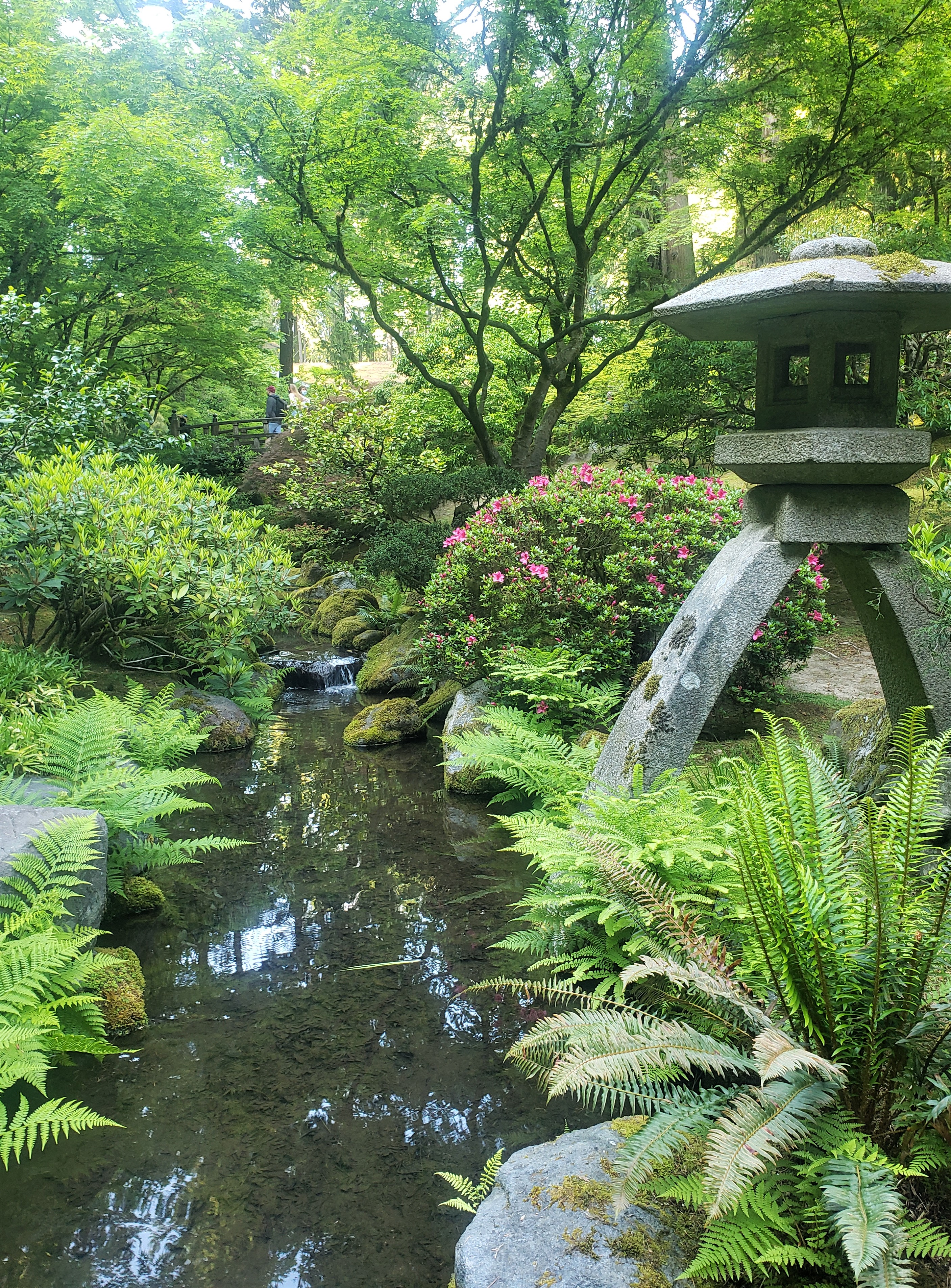
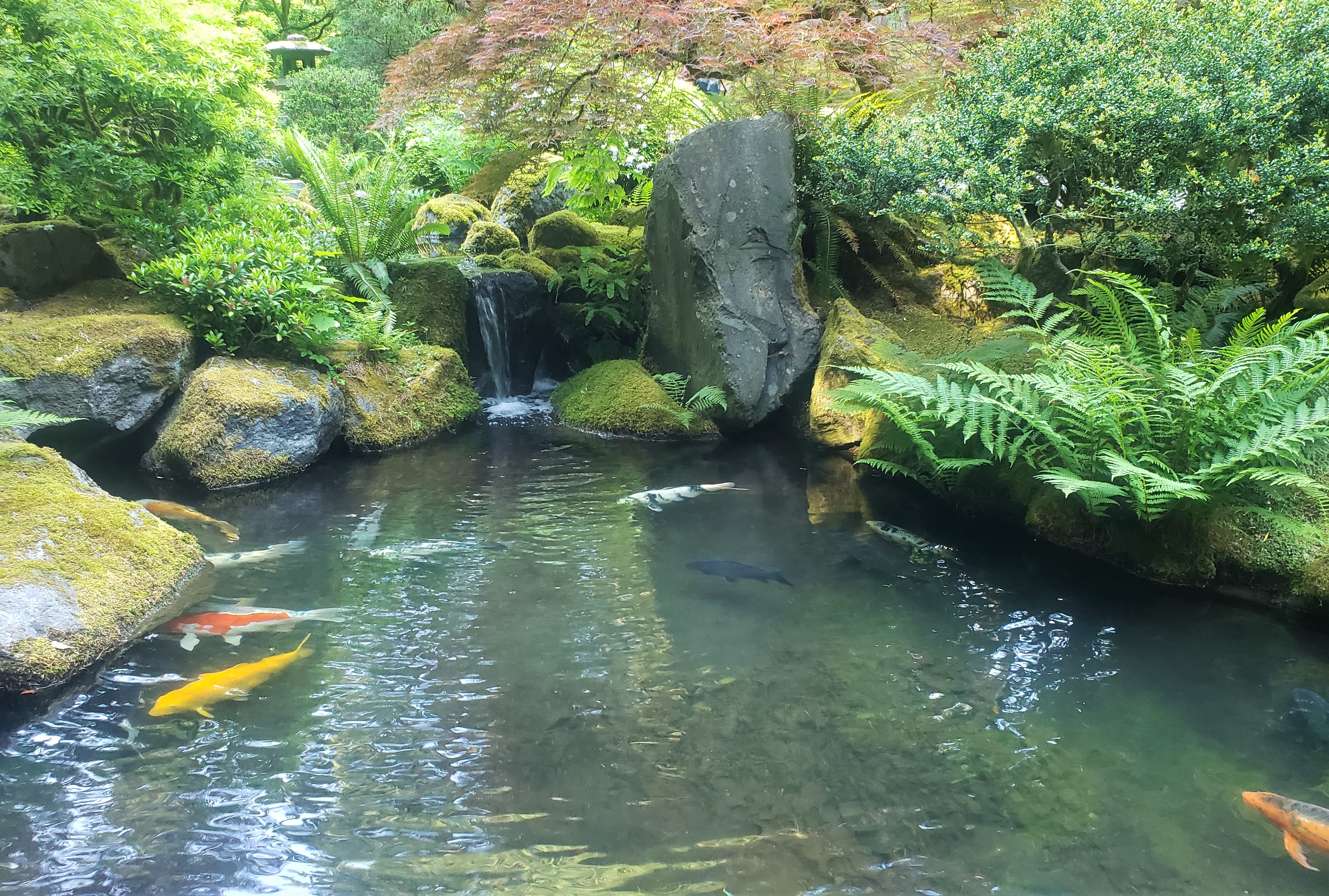
Koi fish, birds, and often frogs are found in Japanese gardens, adding to the natural beauty and the soundscape.
Everything in a Japanese garden will have significance and be placed in the perfect spot.
I’m not an expert on Japanese gardens and there are thousands of years of culture and history to explore; so I have included a couple of links at the end, in case you would like to learn more.
Some of the buildings are currently closed due to covid, as are some of the trails, but the gardens remain beautiful and serene. I didn’t realize how quiet they were until I descended from the hilltop and realized the parking area was so noisy!
The Portland Japanese Garden is in Washington Park, near the Rose Garden. For more information about Washington Park and transportation, please see my previous post on the Portland Rose Garden.
The Japanese Garden is currently requesting advanced ticket purchases through their website.
They are open Wed-Mon 10am-5:30pm, closed on Tuesdays
PRICES:
- Adult: $18.95
- Senior (65+): $16.25
- Student (with ID): $15.25
- Youth (6-17): $13.50
- Child (5 and under): Free
More information on Japanese gardens:
Next Post – Chilaquiles in the Rain
![]()

This is so informational! It’s very cool to get some of the context. Thanks for sharing!
Thanks Ayla, I’m glad you enjoyed it!
This is perhaps one of the few rare spots that could be considered heaven for one’s soul. Thank you for writing that blog! So much beauty; green, stone, water, and earth molding into one, renewing your spirit.
The garden are spot on in tradition Japanese style, and exude serenity. Nice blog, Thanks!
Reminds me of the Botanical Gardens on Okinawa, sure could have used you as a guide, I had no idea what I was looking at, but it was a fantastic place. Also, that first picture of the tree is AMAZING!!!
Thanks, Mike! I’ve always wanted to visit Okinawa so if you go a second time hit me up! 😀